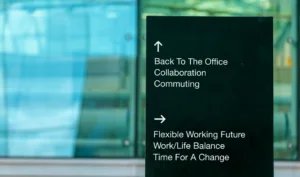
AI Adoption Isn’t Easy. Here’s How Smart Employers Make It Work
Among the many trends that are rapidly redefining work, perhaps the most consequential for HR is the arrival of artificial intelligence (AI). But this points

Among the many trends that are rapidly redefining work, perhaps the most consequential for HR is the arrival of artificial intelligence (AI). But this points

We publish a lot of articles at TalentCulture by terrific HR practitioners, innovators, and thought leaders. In fact, we’ve been sharing useful ideas from diverse

Think about the most successful companies you know. More likely than not, they’re built on the strength of frontline employees, working collaboratively toward shared goals

Diving into important talent strategy trends for 2024, one theme surfaces again and again. What many call “The Great Work Reset” isn’t over. Far from

The pandemic was a powerful force that profoundly changed the nature of work. When lockdowns eventually lifted and organizations welcomed people back to the office,

In our constantly changing business environment, one thing remains the same — employees want to hear from their organization’s leaders. People naturally look to decision-makers

We don’t need research to tell us the future of work will be much different from pre-pandemic norms. But Covid isn’t the cause. Disruption was

The first time COVID-19 made its appearance, a lot of uncertainty, fear, and doubt ruled many people’s lives. Since all of it was new, absolutely

Futurecasting is sometimes akin to looking into the sky and trying to connect the stars. As we look ahead to the future this time, though,
During today’s #WorkTrends show, we discussed leadership lessons we can learn from superheroes. #WorkTrends Founder and Host Meghan M. Biro was joined by David Kahn,
TalentCulture and #TChat. The evolution of a successful Twitter chat… Meghan M. Biro and I have done something amazing here, something we are so very